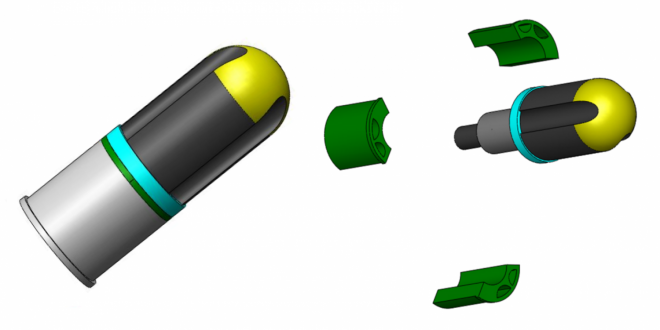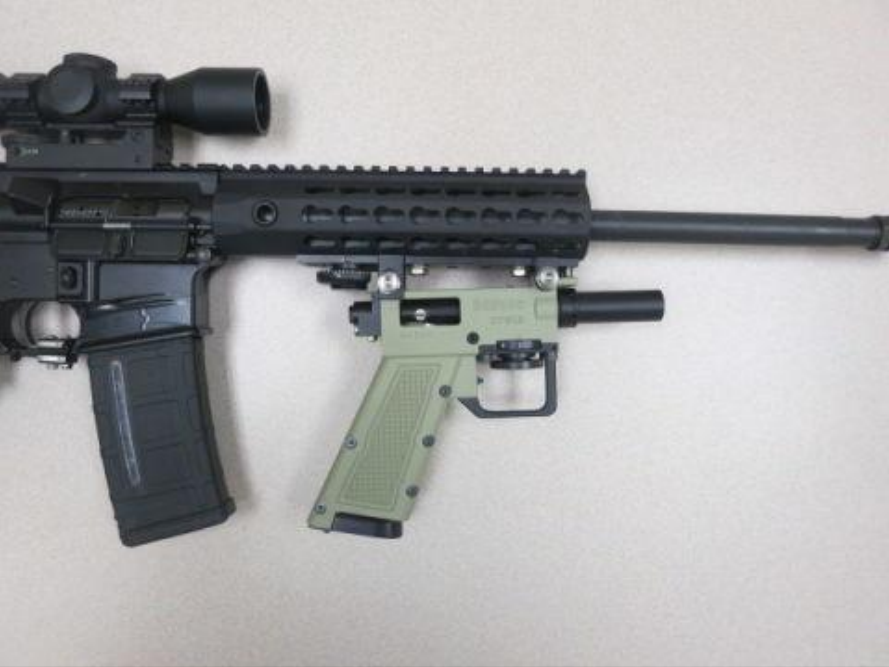At the 2017 National Defense Industry Association’s (NDIA) annual Armament Systems Forum in April, Mr. Howard Kent of Armor Development Group, and Dr. Jeffery Widder presented a concept for a caseless grenade system which allows the user to aim by changing the muzzle velocity of the round itself. Their grenade design would allow a grenadier to fire on targets at varying ranges while maintaining the same firing angle as well as approximately the same impact angle.
The concept behind the new 40mm grenade design is similar to that of muzzle-mounted rifle grenade launchers such as the French system used on the MAS 36/51 and MAS 49/56 rifles. Unlike those weapons, which use a variable seating depth system to change the projectile’s velocity, the new grenades would use a variable vent system to change the launch velocity of the grenade. The shooter would change the velocity (and thus point of impact) of his grenade by rotating the grenade body in the sabot, exposing one of two different sets of gas vents, or no vents at all. Instead of expanding gas propelling the round directly out of the launcher, the concept uses internal pistons similar to those of US and Soviet silent rounds developed during the Cold War.
The concept has the advantages of not requiring the grenadier to change the angle of the rifle relatively to his shoulder to hit a target, as well as potentially allowing a much lighter firing platform. In the presentation, Mr. Kent and Dr. Widder pointed to the similar Batelle non-lethal launcher system which uses a lightweight spigot-type launch platform, and indicated that such a lightweight launcher could also be made for their similar grenade concept.
Batelle spigot-type nonlethal launcher mounted under an AR-15, without projectile attached
The system doesn’t seem to be without its downsides, though. Having to adjust the grenade on the spigot to adjust range seems like an issue when engaging targets which are rapidly changing their distance to the grenadier, such as advancing enemy troops. There is also no way to see which range the grenade is adjusted for from the firing position, and each grenade must have its range adjusted as it is loaded, potentially slowing firing rate versus existing designs. Still, the concept has a lot of potential, particularly the spigot-launched element derived from the original Batelle non-lethal launcher.
 Your Privacy Choices
Your Privacy Choices

